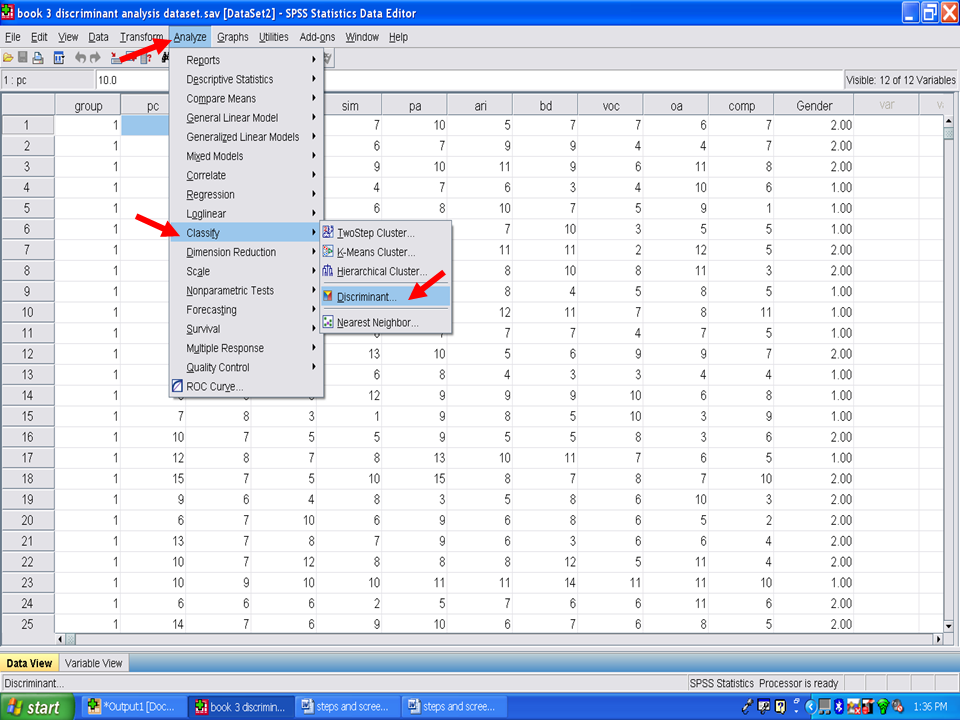| << Chapter < Page | Chapter >> Page > |

Now that we have ascertained the assumptions underlying use of a discriminant analysis procedure, we will begin the steps.
Click on Analyze
Click on Classify
Click on Discriminant

The following screen will then appear. Grouping variable is your independent variable. Remember that in our example that gender is our independent or grouping variable.

Highlight gender and send it into the Grouping variable cell. When you do so, you will note that after Gender is a set of () with question marks. Click on Define Range.

After clicking on Define Range, the following screen will appear: For the Minimum box, we will type in the number 1 because it represents boys. We will type in the number 2 in the Maximum box because it represents girls.

After typing in 1 and 2, then click on Continue.

Next we will send over our 10 dependent variables, the 10 subscales, to the Independents box. Highlight Performance 1 through Verbal 5; click on the middle arrow; send them to the Independents box.

The screen should now look like the one below:

Next we will change the specific type of discriminant analysis from the default of Enter Independents Together to Use Stepwise Method.


Notification Switch
Would you like to follow the 'Calculating advanced statistics' conversation and receive update notifications?